When thinking about whitetail hunting most people think of tree stands and ground blinds. This is the go-to approach for eastern hunting where small plots of land or forest exist, with limited hunting area.
However, once we step a little more into the open, the classic sit and wait technique can be traded in for the underrated and often overlooked “spot and stalk”.
Spot and stalk hunting is common for elk, mule deer, black bear and so forth, but can also be an effective hunting strategy for whitetail deer.
In this article, we will look at:
Let's get right into it...
What is Spot and Stalk Hunting?

Spot and stalk hunting is a style of hunting often used in the western states (as well as some other regions) where the terrain is more expansive.
In these larger areas, it becomes more difficult to set up in a single location close enough to the deer to get a clean shot away.
It usually involves hiking into areas with a good vantage point, using optics such as binoculars to view and analyse the area, and hopefully spot your targeted game species.
Once spotted, the hunter leaves their lookout position in order to close the distance on the animal by foot, hopefully getting into a reasonable shooting distance and position without spooking the animal.
You might be wondering:
“What is the difference between stalk hunting and still / treestand / blind hunting?”
Spot and Stalk vs Tree Stand/Blind Hunting
During tree stand or blind hunting, the hunter is positioned in a way to blend in and hide out of clear sight of the deer, stationary.
The idea is for the deer to move around the area where the hunter is posted and hopefully come in close enough to get a shot away.
When compared to this style of hunting, spot and stalk hunting is generally the opposite.
The hunter will get in a position that they can find the deer, and instead of waiting for the deer to come near the hunter. The hunter strategically makes his or her way to the deer.
Spot and Stalk vs Still Hunting
Sometimes these two names get confused with each other.
Still hunting is a form of hunting where you walk slowly and cautiously, usually through reasonably vegetation-dense areas; continuing to move at a slow, observant, casual pace, ready to take a shot if a deer happens to come through the area.
The word “still” comes from the very slow and deliberate movements of the hunter.
Whilst still hunting is a single approach, spot and stalk hunting is rather broken up into two different periods:
Now, there is one more point I need to make:
Pros and Cons
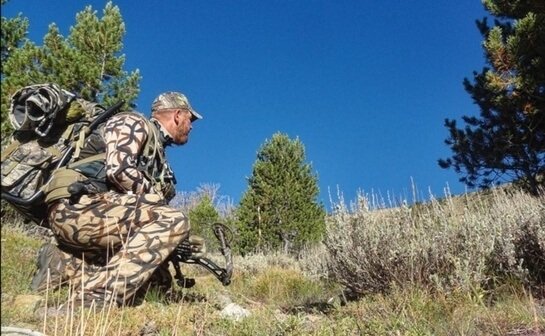
Pros:
Cons:
How to Spot and Stalk Whitetail Deer:
To hunt in this style there are a few different components to factor in if you wish to make it a successful hunt. Let's take a look at some of these key aspects.
Setup
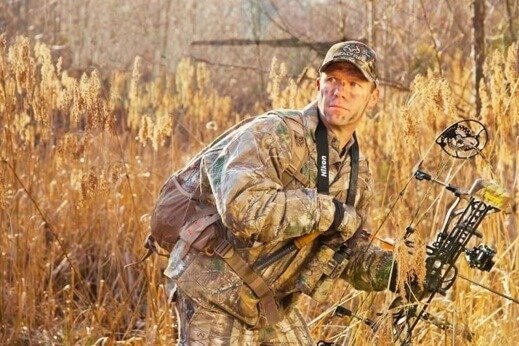
Where and how you set up for glassing the area will depend on the terrain. There may well be occasions that you have a hill or natural area overlooking enough potential deer territory.
Alternatively, you may also need to consider setting up a tree stand or man-made platform, such as:
depending on what is the most viable option for that area (based on usage time, resources, space and preference).
Ideally this would be set up in a location with a good line of sight to a solid plot of terrain in order to scope out the rest of the area, before stepping down and getting on the stalk.
The best part?
Spot and stalk hunting does not necessarily mean that you have to always be looking to stalk in on a specific pre-spotted animal.
You may also notice deer moving around in some areas of interest, and need to stalk into an up-close location to give you a good chance of crossing paths, or waiting for the deer to reemerge.
But what is the best equipment for stalking hunting?
Spot And Stalk Hunting Gear
Binoculars

When it comes to spot and stalk hunting, a good set of optics is your best friend; primarily binoculars.
Much of the time trying to spot an animal is based on finding a good vantage point and scouring the landscape with your optics.
As this is done from a bit of a distance, the binoculars help to see animals and movements that the naked eye is likely to miss.
Rangefinder
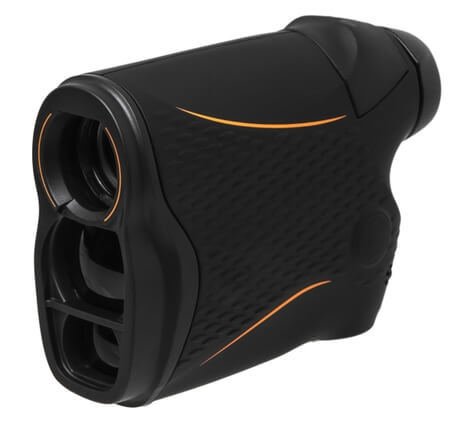
A rangefinder definitely also comes in handy, as you can judge how far you may need to stalk, and of course the distance of your shot.
Camo hunting clothes

Quality clothing is also important especially during the stalking aspect of the hunt.
Gear that is designed not to make too much noise when moving, with a good camouflage pattern will help you to stay stealthy when getting in tight on animals.
The chosen camo colors should ideally be similar to the colors of the landscape at that time of the season.
Camo mask and gloves
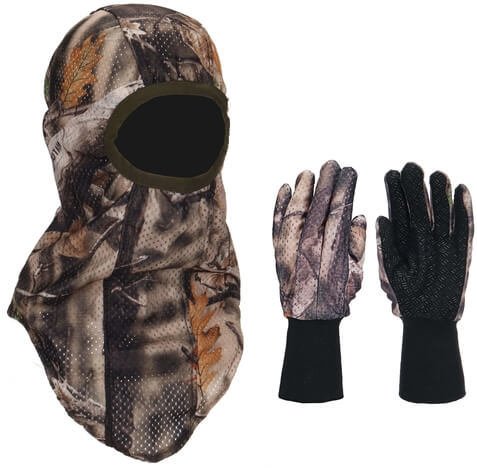
Many hunters will also cover their hands and face either with a camo mask and gloves, or some form of paint in order to break up the color and shine of the human skin.
Deer can see your skin as the sunlight and sweat illuminate it more.
Wind
Wind and its direction is one of the absolute key factors in whether your hunt will be a success or failure.
Most species of the large game have an elite sense of smell; so making sure your scent is not travelling downwind to the deer is key.
The wind doesn’t necessarily need to be directly in your face.
Here’s the deal:
On most occasions, a crosswind should be enough to blow your scent out of the direction of the deer, but a slight shift in the direction may turn it straight downwind.
Avoid straight wind:
Try to set up in areas where the wind isn’t blowing straight into the potential deer zone.
Once you plan to make your stalk or get on the move, you need to be continually checking and assessing the wind.
You may be forced to take a long way around, which is better than blowing deer out of the area completely.
Here’s my story:
Hiking through a thick layer of dried fallen leaves, every footstep was a loud crunching, as if walking on cornflakes.
Luckily, the wind had picked up so strongly that the trees, leaves and branches made a consistent loud rustling.
I was able to slowly walk in on a whitetail doe to about 20 yards out, unnoticed, when in non-windy circumstances my footsteps would have likely spooked the deer before I’d even got a chance to see it.
Topography and Features
One part of moving through the landscape undetected is to use features to your advantage in order to stay out of the deer’s eye line.
Natural changes in topography can be great for this, using ravines, creek bottoms or small hills to move along, out of sight before popping back up near the deer.
It gets better:
Moving in the shadows is also an underrated and helpful manoeuvre as the darkness will keep the sun from highlighting you.
When coming in for a final stalk, if there are any features that can be used to block the line of sight between the deer’s eyes and your body, use them.
If you are unable to see the deer’s head because a tree trunk is in the way, then there is a good chance the deer can’t see you.
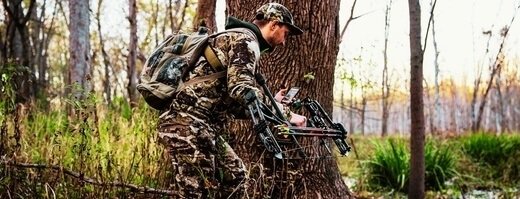
Spot And Stalk Deer Hunting Tips:
Stay Aware
One of the risks of spot and stalk hunting is crossing paths with other animals whilst you’re on the move.
It is important at all times to be aware of your surroundings, especially when you are stalking in on a buck.
There are times when there may be a doe off to the side in the brush that you do not notice.
If she notices you, there is a strong likelihood that she will run, taking all the other deer in the area along with her.
Aware of deer behavior
Beyond your general spatial awareness, paying attention to the behaviour of the deer you do see will help you to adjust your approach.
If the deer appears alert or nervous, it is probably worth slowing down or stopping to allow them time to calm down and relax again.
If they seem oblivious to your presence, that is a good time to continue to make your move.
Slow and Steady (or Not)
Most of the time if you are looking to stalk in on a deer you need to be slow, calm, calculated and cautious.
It can be a physically and mentally challenging task, as it may even take a solid minute or two per every couple of yards, depending on the situation.
It can be hard to remain patient, but it is not an easy task. Losing patience and taking shortcuts in your approach can damage the entire hunt.
But wait, there’s more…
If the wind turns in an unfavorable direction, it is probably best to back out and find another approach.
If you get tired or frustrated, take a minute to settle yourself, rather than pushing on faster.
There are occasions where moving at a somewhat normal (or less stealthy) pace can work out, but in general, is not the recommended practice.
However, without making a move you are unlikely to get in on a deer at all…
In My Experience:
There have been a couple of occasions where we have been able to walk straight in on a whitetail buck.
Last fall a friend and I walked straight into 30 yards of a big buck, with a perfect shooting opportunity. Unfortunately at this time, we did not expect it, so we weren’t firearm-ready.
The following day that same friend walked, whilst walking out from inside the timber came across another buck, just a few years ahead; luckily getting the shot.
Sometimes it is better to get in there and give yourself an opportunity than to hang back and take no opportunity at all. Hunting is all about decision making.
Preparation and Fitness

Slow walking in the woods can be tiring. Stalking, even more tiring.
There are many occasions where you need to be slowly controlling every step, sometimes lunging, sometimes ducking, sometimes crawling on knees and elbows.
These are an inefficient way to move, but a necessary move at times if you want a successful stalk.
Here’s the deal:
Training adequately prior to hunting season this type of movement in the field will mean you’ll become less fatigued and less likely to make mistakes.
This could include a mix of squat, lunge and weighted training programs, or a lot of mixed terrain and elevation hiking.
Any activities that build on muscle strength and endurance over a sustained period will help take unnecessary physical and mental stress out of the stalk.
It gets worse:
Minor mistakes when tired could be accidentally misstepping or bumping something on the move.
Major fatigue-related mistakes could mean a shaky shot resulting in a wounded deer.
Changing Seasons

Whitetail deer behave differently during different periods of the hunting season. Let me explain…
Early season
During early-season deer will be staying in more localised areas, with reasonably predictable and consistent patterns of behaviour.
In these times, it is worth glassing across these main feeding and bedding areas.
Rut season
When the rut is on, deer will be moving more regularly and tend to function a little less cautiously.
This is a good opportunity to watch deer move around larger areas.
The rut may allow you to sneak in on or call in a buck more easily than other times of the season.
Late season
Late season spot and stalk hunting can be a little more challenging as the deer tend to be back on alert after the rut.
A snow-covered ground can make it more difficult to sneak around and stalk in; either by the crunching of the snow underfoot or the general cold and discomfort of creeping or crawling in through the snow.
The Bottom Line?
Depending on the area in which you hunt, spot and stalk hunting for whitetail deer may well be the best approach.
Even though whitetails are known to be skittish, thousands of them are taken each year with the spot and stalk style of hunting.
There isn’t much more of an exciting feeling than boots on the ground, working the conditions, working the terrain, sneaking in and getting a 1-on-1 opportunity with a deer.
Have you used the spot and stalk hunting method? Do any of these tips resonate with you? Are there any pieces you are interested in putting into practice?
We would love to hear your experiences and thoughts in the comments below!

100% of my hunting, so far, has been from the ground. Spot & stalk or ground blind or makeshift cover. These are the tips I’ve been waiting for. I can feel it. This will be the season I land my first buck.